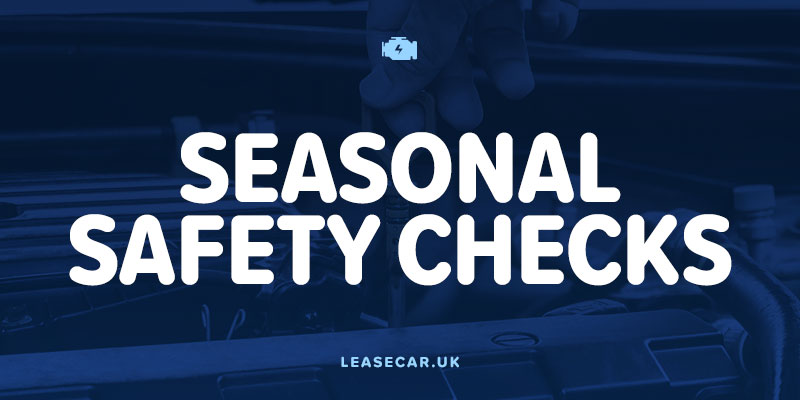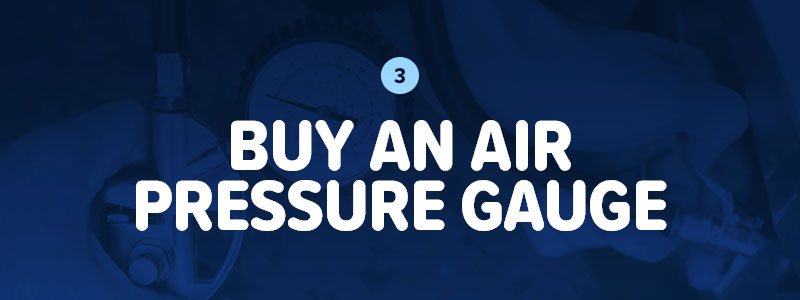
When was the last time you did a proper safety check for your vehicle? Or engaged a professional to do the job for you?
Even while enjoying a leased vehicle it's imperative you ensure it is safe to drive all year round. While the UK's temperature is fairly steady compared to some of the extremes that can be found worldwide, it's worth thinking about checking your car is ready for the colder months in autumn, and the summer months in March/April.
Across the world the issue is recognised; for example, in America there is the Annual National Car Care month. In the UK, many local garages offer seasonal safety checks for your vehicle, to include an inspection of:
If you are not confident with checking a vehicle, then this can be a simple solution to give you peace of mind. It also limits the chances of the car failing or even worse crashing.
However, some of these checks can be carried out yourself, and even if you do pay for a reputable garage to assist, you should still be aware of some of the best ways of looking after your vehicles throughout the year.
Four quick tips

1. Read the manual: You might think that you don't need to consult this because of the magic of the internet; even if you break down you can find videos online, right? Well, what happens if you have no signal, or don't have your phone on you?
Wouldn't it be better to know what the various parts of the engine are? The simplest, immediate checks that can be carried out yourself, can save on a lot of hassle. Simply knowing where to fill up the radiator, brake fluid and washer fluid, and where to locate the fog lights or main beam on the dashboard can be hugely beneficial. It might sound patronising, but there are a huge number of drivers who never bother!
Simple checks should be regularly carried out, especially before long drives. Check all the lights work – perhaps grab a friend or family member who can check this while you sit in the car. Not only should they work, but they also should be clean enough for drivers to see clearly, so try this in the dark. Your wipers should also work efficiently, and clean the car windows properly.
Know where to fill the oil/radiator/brake fluid/windscreen/power steering levels, and how much to put in. A monthly check of the levels should be carried out in winter and summer to prevent the engine freezing or overheating. Take a torch with you in the car, simply so you can see where to fill in cold/foggy winter weather in an emergency. The levels on the side of each reservoir are fairly self-explanatory.

2. Have spares on hand: With the above points in mind, why not have various spares in the car with you? Bulbs for front and rear lights, (alongside the knowledge to fit them), wipers, jump leads, coolant/antifreeze, brake fluid, and oil should all be present. It might be worth investing in an emergency battery booster, should you be left with a dead battery in a remote area where no-one can help. Keep plenty of water for makeshift window cleaning duties too.
Keep the number of the AA/RAC or other emergency services nearby, either stored on your phone or written within the manual. A spare tyre, even if it's only one that can literally give you a few days of driving before getting to a garage, and can be a lifesaver if you know how to fit it; ensure you know where to keep the jack and other fitting tools.
In addition, keep a torch, blanket and food and drinking water in the car in the colder months.

3. Buy an air pressure gauge: Your manual will tell you the optimal PSI range of your vehicle, which will typically be between 30 and 35 PSI (pounds per square inch). This should be checked at least once per month, and adjusting the inflation if necessary.
Not only does an under-inflated tyre reduce the efficiency of the vehicle, but it also makes it less easy to drive and, potentially, dangerous – an under-inflated tyre is far more susceptible to blowouts and a loss of control. Ideally, make sure the tyres are correct before leaving, and/or take a gauge or pump with you.
The law requires car tyres to have a minimum tread depth of 1.6mm around the central three-quarters. Any less than this, and the tyre is illegal and will run the risk of perishing and punctures. It will also clearly fail its MOT test.
Some drivers prefer specific 'winter tyres' for the colder months, which retain their softness under low temperatures due to a different rubber compound structure. They also possess a different tread pattern of grooves and slits to give better grip on the ice.

4. Get serviced: You'll probably get reminders that the vehicle needs a service periodically (dependent on age/mileage), and while this is not a legal requirement it can save you large amounts of money, should the car go wrong. A well-maintained and serviced car is more efficient and will run better, so it will save you money on a month-by-month basis. You've also got a greater chance of selling the car, should you wish to do so.
It goes without saying that if your vehicle is more than three years old it requires a yearly MOT test, which will test the brakes, lighting, steering, emissions, seat belts, body/structure, and emissions among other aspects. Don't be tempted to skimp on their findings; if a mechanic advises that your brakes are on the verge of failing a test and only just passed, then it's a good idea to get them replaced there and then before waiting for them to fail while driving.
Additionally, if you see symptoms that lead you to suspect something is gravely wrong such as signs of leakage then don't wait to take the car to a garage.
Ensuring your vehicle is in good working condition also minimises the effects of wear and tear and therefore can reduce the rate of depreciation, which is great news for when you return your car at the end of your lease. If you lease a vehicle via Leasecar you can also pay for additional maintenance that can aid you with these concerns, and take away much of the stress of seasonal driving.
